۱. The Importance of Iran’s Leather Industry in the Global Economy
Iran’s leather industry, with a history spanning over a thousand years, is not only part of the country’s cultural and artistic heritage but also holds significant potential to become one of the main pillars of non-oil exports. From traditional tanning in cities such as Tabriz, Varamin, and Hamedan to the handcrafted artistry of Isfahan and Yazd masters, a wealth of skills, techniques, and artistic refinement exists in this industry that few countries in the world can replicate.
In today’s world, where luxury consumers are seeking authentic, handmade, and sustainable products, Iranian leather can earn a rightful place alongside globally renowned brands such as Italy and France. The superior quality of raw materials, stemming from Iran’s unique climate and livestock breeding conditions, coupled with competitive production costs, positions the country strongly for entry into international markets.
The Position of Iranian Luxury Leather Products in International Markets
The global luxury leather goods market has undergone major changes over the past decade. Today’s consumers, instead of purchasing mass-produced industrial brands, are gravitating toward handmade, limited, and culturally meaningful items. In this context, Iranian leather products, thanks to the fusion of traditional artistry and modern design, have successfully drawn attention from customers in Europe, the Middle East, and East Asia.
Successful export cases show that handbags inspired by Persian carpet motifs or hand-stitched leather shoes made with vegetable-tanned leather have been able to compete with products from well-known brands. Moreover, competitive pricing combined with superior quality has become a key advantage for Iranian producers in export negotiations.
Objectives and Structure of the Article
This article aims to provide a comprehensive and practical guide for exporting luxury leather goods from Iran. Its content is designed to be useful both for foreign investors and for Iranian producers and brands. Three key objectives are pursued along the way:
- Educating and analyzing the global market to identify opportunities and threats.
- Offering practical solutions in branding, marketing, logistics, and compliance with standards.
- Introducing supportive tools and services, such as the MMF Market platform, to facilitate entry into the global market.
Each section includes not only theoretical explanations but also comparative tables and analytical data, giving the reader an accurate, practical, and decision-oriented perspective.
Table 1 – The Position and Importance of Iranian Luxury Leather Products
| Indicator | Iran’s Status | Key Competitors’ Status | Iran’s Comparative Advantage |
|---|---|---|---|
| Quality of Raw Materials | Very high (natural leather with traditional and vegetable tanning) | High (Italy), Medium to High (Turkey) | Use of traditional methods and local resources |
| Production Costs | Lower than Europe and Turkey | Very high (Europe), Medium (Turkey) | Strong price competitiveness |
| Design & Art | Unique, fusion of traditional and modern | Modern and industrial (Italy), Mixed (Turkey) | Cultural and artistic distinction |
| Export Growth Potential | High (untapped markets) | Saturated in Europe and America | Access to new markets |
| Brand Recognition | Developing | Very high (Italy, France) | Requires investment in branding |
۲. Understanding the Global Luxury Leather Goods Market
2.1 Market Value and Annual Growth Rate
According to the latest data from Statista (2024) and Grand View Research (2023), the global luxury leather goods market was valued at approximately USD 72.3 billion in 2023. Projections indicate that this figure will grow at a compound annual growth rate (CAGR) of around 5.8%, reaching over USD 105 billion by 2030.
This steady growth is mainly driven by three key factors:
- Increasing purchasing power of the middle class and newly wealthy populations in emerging markets (China, India, UAE, Brazil).
- Expansion of online luxury sales, which has made global brands more accessible to consumers.
- Rising demand for sustainable and handmade products that carry greater cultural value and higher quality.
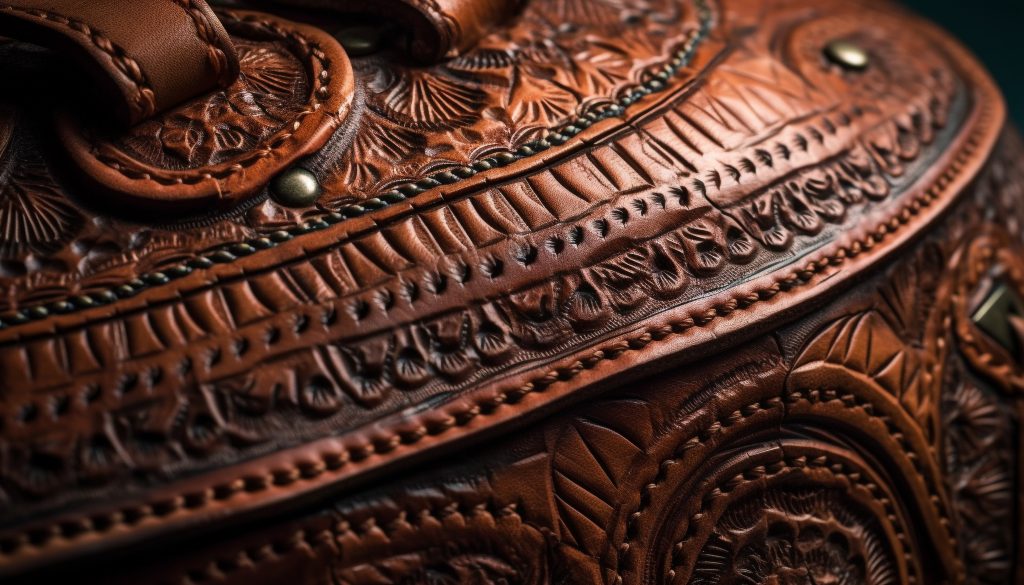
2.2. Target Geographical Regions
The global luxury leather goods market can be divided into four main poles:
Europe:
- The largest consumer market for luxury goods, concentrated in countries such as Italy, France, Germany, and the UK.
- European customers show high brand loyalty, but if a brand offers a unique story and superior quality, they are open to accepting new entrants.
North America:
- A mature market with a focus on modern design, strong after-sales service, and online shopping.
- Customers in this region place high value on comfort and product durability.
Asia-Pacific:
- The fastest-growing market for luxury consumption, especially in China, Japan, South Korea, and Singapore.
- Special attention is given to refined design, premium packaging, and digital branding.
Middle East:
- A smaller market in volume, but with high per capita purchasing power.
- Customers in this region show strong interest in customized, limited-edition, and luxury products.
2.3 Consumer Trends and Preferences
- Sustainability: Consumers are looking for products made using environmentally friendly methods.
- Customization: Strong demand for unique, limited-production products that give buyers a sense of exclusivity.
- Online Shopping & Digital Experience: Growing trust in online purchases and use of augmented reality (AR) for product trials.
- Fusion of Authenticity & Modernity: Interest in products that combine cultural roots with innovative design.
Table 2 – Comparison of Target Markets for Luxury Leather Goods
| Region | Market Value (2023) | Projected Annual Growth | Customer Characteristics | Entry Challenges | Opportunities |
|---|---|---|---|---|---|
| Europe | $28 billion | 3.5% | High brand loyalty, sensitivity to quality & authenticity | Competition with established Italian & French brands | Differentiation through Iran’s cultural story |
| North America | $15 billion | 4.2% | Interest in modern design, after-sales services, online shopping | Need for strong distribution network & valid certifications | Expanding sales via online platforms and boutique partnerships |
| Asia-Pacific | $22 billion | 8% | Rapid middle-class growth, attention to luxury packaging | Need for localized design & colors | Strong potential for B2B contracts & online sales |
| Middle East | $7 billion | 6.5% | Demand for customized & limited-edition products | Economic & political fluctuations | Leveraging Iran’s cultural & geographical ties |
3. Analysis of the Competitive Advantage of Iranian Leather Products
3.1 Quality of Raw Materials (Natural Leather & Traditional Tanning)
Iranian leather is primarily made from high-quality cow, goat, and sheep hides raised in regions with specific climatic conditions. This climate and livestock feeding result in dense fibers, high flexibility, and soft textures in the hides. Traditional tanning methods, especially vegetable tanning using pomegranate peel, sumac, and tannin-rich plants, ensure long-lasting color and create unique textures that are highly valued in the luxury market. These features make Iranian leather products stand out compared to the industrial outputs of other countries.
3.2 Handcrafting Skills and Artistic Design
With a rich background in handicrafts, Iran boasts master artisans who deliver precise stitching, clean cuts, and unique hand embellishments at an unparalleled level. The use of Persian motifs such as Eslimi, Khatai, Toranj, and Boteh Jegheh in the design of leather bags, shoes, and accessories creates artistic and cultural distinction. In markets saturated with industrial products, this serves as a strong advantage.
Additionally, the ability to merge modernity (Minimalism, Contemporary Styles) with traditional authenticity has enabled Iranian products to appeal to a wide range of international tastes.
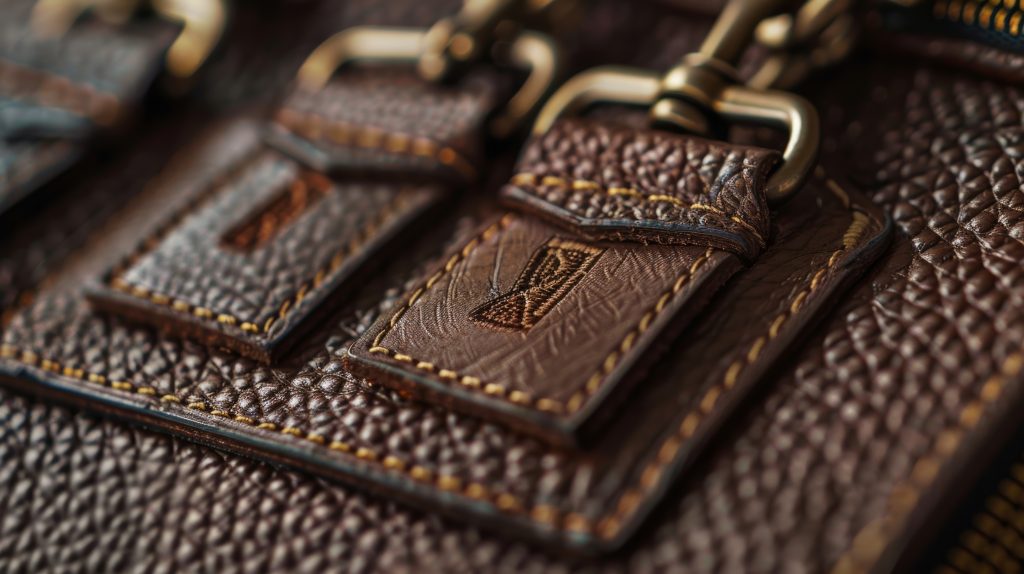
3.3 Production Costs and Price Advantage
The cost of producing leather goods in Iran is on average 30–50% lower than in European countries and about 15–20% lower than in Turkey. This cost difference stems from:
- Lower labor wages compared to Europe.
- Easy access to domestic raw materials.
- Traditional and family-based production infrastructures that reduce overhead costs.
This price advantage allows exporters either to secure higher profit margins or to offer more competitive prices when entering the market.
3.4 Innovation and Flexibility in Production
Small and medium-sized leather workshops in Iran demonstrate high flexibility in adjusting designs, colors, and models based on foreign customer demands. In the luxury market, where clients seek customized and limited editions, this flexibility is a strategic advantage.
Table 3 – Comparison of Iran’s Competitive Advantage with Rival Countries
| Indicator | Iran (ایران) | Italy (ایتالیا) | Turkey (ترکیه) | India (هند) |
|---|---|---|---|---|
| Raw Material Quality | Very high (premium hides, vegetable tanning) | Very high (premium hides, industrial + vegetable tanning) | High (industrial hides, some vegetable tanning) | Medium (buffalo & native cow hides) |
| Design & Innovation | Unique mix of traditional & modern | Modern, luxury, global | Modern with European inspiration | Simple & industrial |
| Production Cost | Low | Very high | Medium | Very low |
| Global Brand Reputation | Developing | Very high | Medium to high | Medium |
| Eco-friendliness | High (vegetable tanning, natural materials) | Medium to high | Medium | Low |
| Flexibility for Custom Orders | Very high | Medium | High | Low |
| Export Growth Potential | High (untapped markets) | Limited (saturated markets) | Medium | High but in low-cost segment |
4. International Export Requirements and Standards
4.1 Key Certifications and Licenses for Entering Global Markets
To successfully and sustainably penetrate luxury leather goods markets, Iranian brands must obtain internationally recognized certifications and standards. These not only facilitate market entry but also increase trust among bulk buyers and end consumers:
- ISO 9001 – Quality Management: Ensures that production processes, quality control, and after-sales services are implemented in line with international standards.
- ISO 14001 – Environmental Management: Demonstrates the manufacturer’s commitment to environmental preservation and reducing the negative impacts of production.
- Leather Working Group (LWG): The most reputable global certification for sustainable leather production; many major retailers will not source from manufacturers lacking this certification.
- CE Marking: A mandatory requirement for entering EU countries, certifying product safety and compliance with European regulations.
- REACH Compliance: Required in the EU to guarantee that hazardous chemicals such as Chromium VI are not used.
- Halal Certification: Essential for Islamic markets such as the Middle East, Malaysia, and Indonesia, where adherence to Halal production principles is mandatory.
4.2 Product Quality, Health, and Safety Requirements
- Use of raw materials free from toxic or allergenic substances.
- Compliance with international testing for abrasion resistance, elasticity, colorfastness, and water resistance (where applicable).
- Commitment to safe packaging standards with both protective functionality and a luxurious visual appeal.
4.3 Packaging and Labeling Requirements
Each market has its own regulations regarding labeling and packaging. For example:
- European Union: Country of origin, material composition, care instructions, and compliance with the official language(s) of the destination country.
- North America: Use of bilingual labels (English and French for Canada), production code, and manufacturer details.
- Asia-Pacific: Emphasis on luxury packaging and providing product booklets in the local language.
- Middle East: Premium packaging resistant to heat and humidity, with Halal logos included where necessary.
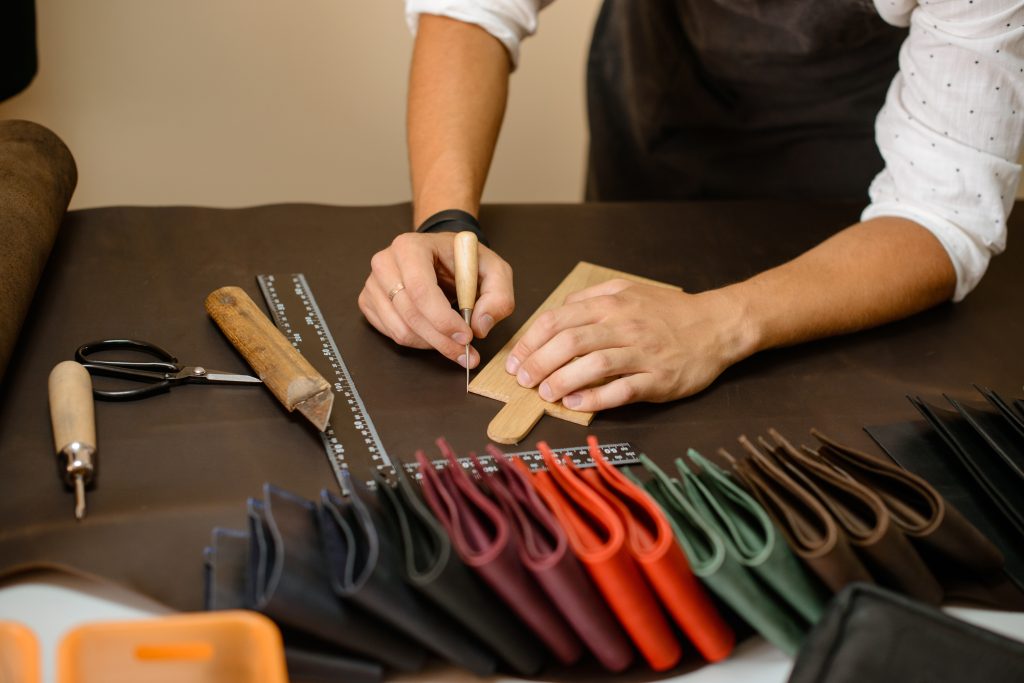
Table 4 – Comparison of Requirements and Certifications in Target Markets for Luxury Leather Goods
| Target Market | Key Certifications | Specific Requirements | Potential Barriers | Key Notes for Successful Entry |
|---|---|---|---|---|
| European Union | CE, REACH, LWG, ISO 9001 | Labeling in official language, restrictions on harmful chemicals | Strict environmental regulations | Collaborate with local export consultants to ensure compliance |
| North America | ISO 9001, ASTM Standards, LWG | Labeling in English/French, quality assurance, after-sales service | Need for a strong distribution network | Focus on durability, comfort, and after-sales service |
| Asia-Pacific | ISO 9001, LWG | Design tailored to local market tastes, premium packaging | Different preferences in each country | Customize design and color according to local culture |
| Middle East | ISO 9001, Halal Certification | Luxury packaging, Halal certification, weather-resistant packaging | Economic and political fluctuations | Leverage cultural ties and diplomatic relations |
4.4 Key Considerations for Iranian Exporters
- LWG Certification is essential to enter the supply chain of global luxury brands.
- Packaging should not only provide physical protection but also convey brand identity and a sense of luxury.
- Compliance with destination country regulations must be verified before shipment to avoid return costs or fines.
- For sensitive markets, internationally accredited laboratories should be used for quality and safety testing.
5. International Marketing and Branding Strategies
5.1 Brand Positioning
Entering the luxury market means competing on a level where product quality alone is not enough; perception management is crucial. An Iranian brand should position itself as a cultural ambassador with global standards. This implies:
- Defining the product not merely as a leather item but as an artistic creation with authenticity and a unique story.
- Selecting a specific market niche: Premium Handcrafted Luxury or Sustainable Luxury.
- Highlighting a Unique Selling Proposition (USP) such as traditional vegetable tanning, culturally inspired design, or limited editions.
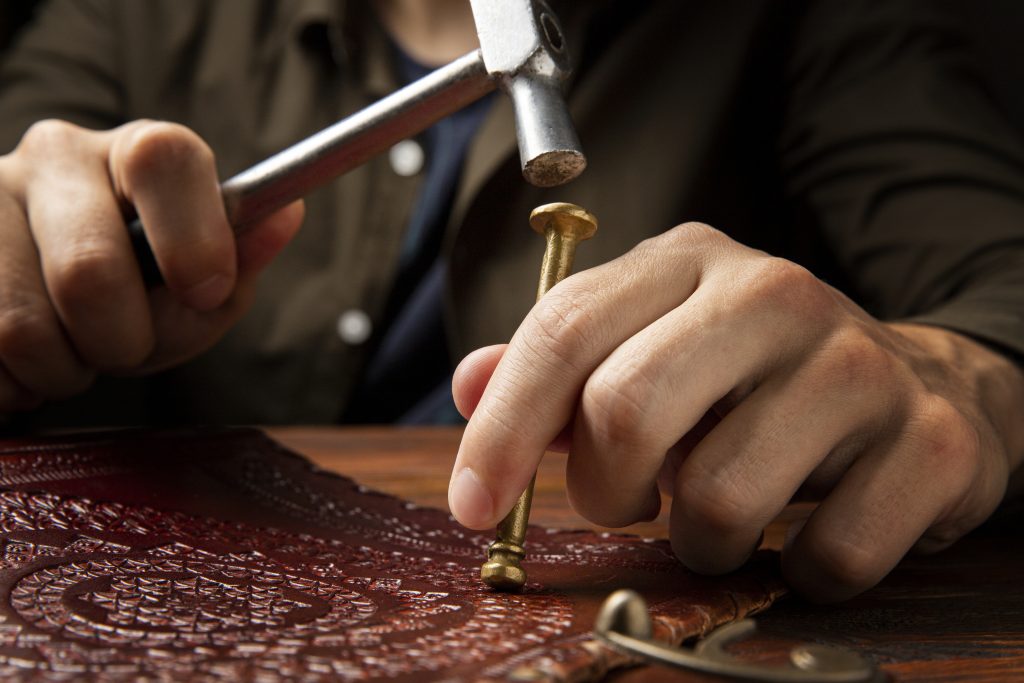
5.2 داستانسرایی برند (Brand Storytelling)
مشتریان بازار لوکس به دنبال تجربه هستند، نه صرفاً محصول. داستانسرایی برند باید:
- ریشه تاریخی و فرهنگی محصول را بیان کند (مثلاً الهام از معماری ایرانی یا فرشهای دستباف).
- فرآیند ساخت را به تصویر بکشد؛ از انتخاب چرم تا دوخت نهایی توسط استادکار.
- بهصورت چندزبانه و چندرسانهای (تصویر، ویدئو، متن) در وبسایت و شبکههای اجتماعی منتشر شود.
- بر ارزشهای پایدار مانند محیطزیست، حمایت از کارگاههای خانوادگی و صنایعدستی تأکید کند.
5.3 حضور در نمایشگاهها و رویدادهای بینالمللی
نمایشگاهها همچنان مهمترین بستر B2B برای ورود به بازار لوکس هستند. نمونهها:
- MIPEL (ایتالیا): تخصصیترین نمایشگاه کیف و اکسسوری چرمی در اروپا.
- Lineapelle (ایتالیا): مهمترین نمایشگاه مواد اولیه و نوآوریهای صنعت چرم.
- APLF Leather (هنگکنگ): بزرگترین رویداد چرم در آسیا.
حضور مؤثر در این رویدادها شامل:
- طراحی غرفه با هویت بصری برند.
- نمایش محصولات شاخص و پرفروش.
- برگزاری جلسات خصوصی با خریداران کلیدی.
5.4 بازاریابی دیجیتال و فروش آنلاین B2B و B2C
با رشد تجارت الکترونیک لوکس، دیجیتال مارکتینگ نقشی حیاتی دارد:
- وبسایت چندزبانه با طراحی مینیمال و امکان پرداخت بینالمللی.
- SEO و محتوای تخصصی برای دیدهشدن در جستجوهای مرتبط.
- تبلیغات هدفمند در Google Ads و Meta Ads با تمرکز بر کشورها و بازارهای هدف.
- فعالیت مستمر در Instagram، TikTok، Pinterest برای برندینگ بصری و در LinkedIn برای جذب مشتریان B2B.
- همکاری با اینفلوئنسرهای حوزه لوکس در بازارهای هدف.
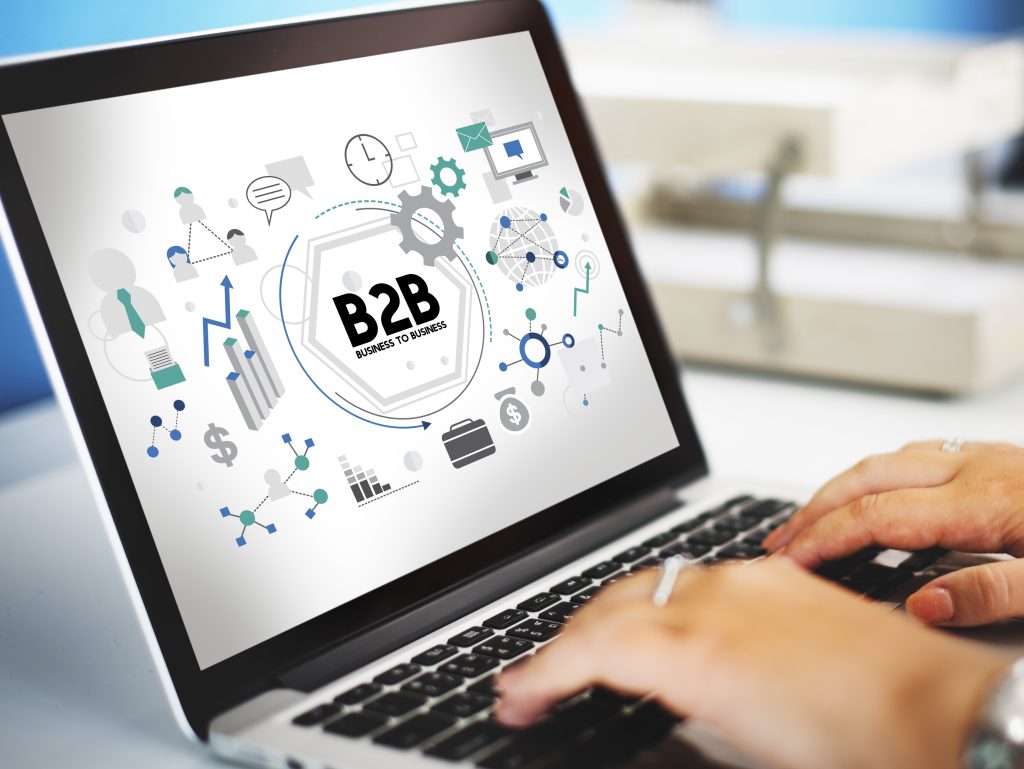
ChatGPT said:
Table 5 – Comparison of Marketing and Branding Strategies for Luxury Leather Goods
| Strategy | Advantages | Disadvantages | Suitable For |
|---|---|---|---|
| Cultural Branding | Strong differentiation, high emotional value | Requires authentic and powerful storytelling | New brands with cultural roots |
| Sustainable Branding | Attractive to younger, conscious consumers | Requires full compliance with eco-friendly standards | Brands with green production processes |
| Participation in Trade Fairs | Direct connection with major buyers | High costs, requires preparation | Brands with large production capacity |
| Direct-to-Consumer (D2C) Online Sales | High profit margins, full control over customer experience | Requires strong digital marketing | Small and medium-sized brands |
| Partnership with Luxury Platforms (Farfetch, Net-a-Porter) | Fast access to global markets | High commission fees, strong competition | Brands with established reputation and quality |
5.5 Key Recommendations for Iranian Brands
- Focus on less competitive but high-potential markets such as Eastern Europe, Central Asia, and the Gulf region.
- Invest in professional photography and videography to showcase products.
- Maintain consistent quality, even for large-scale orders.
- Leverage B2B platforms like Alibaba, Faire, and Tradewheel to attract bulk buyers.
6. Global Distribution and Sales Channels
Choosing the right distribution and sales channel is one of the most critical decisions in the luxury leather export process. Each channel has its own structure, costs, returns, and requirements. The choice should depend on the type of product, target market, production capacity, and brand strategy.
6.1 Partnerships with Luxury Retailers
Features:
- Physical presence in international luxury stores such as Harrods (London), Galeries Lafayette (Paris), or Saks Fifth Avenue (New York).
- Fast brand positioning through store reputation.
Advantages:
- Increases brand credibility and visibility among premium customers.
- Provides a physical shopping experience for customers.
Disadvantages:
- Strict acceptance process.
- Requires full compliance with quality and packaging standards.
- Lower profit margins due to store commissions.
6.2 Direct-to-Consumer (D2C) Online Sales
Features:
- Launching a multilingual dedicated website with international payment and worldwide shipping.
Advantages:
- Full control over customer experience, pricing, and brand messaging.
- Higher profit margins compared to intermediaries.
Disadvantages:
- Requires strong investment in digital marketing.
- Full responsibility for logistics, after-sales service, and order management.
6.3 Global E-commerce Platforms
Features:
- Selling via established platforms such as Farfetch, Net-a-Porter, Amazon Handmade, Etsy, Alibaba, Faire.
Advantages:
- Fast access to global customers without heavy upfront investment.
- Ability to generate sales without a dedicated infrastructure.
Disadvantages:
- Intense competition with existing brands.
- High commissions (10%–30% depending on platform).
- Limited control over the customer experience.
6.4 Omni-Channel Strategy
Features:
- Combining multiple channels simultaneously (e.g., luxury retail stores, dedicated online sales, and global platforms).
Advantages:
- Maximizes market coverage and reduces dependence on a single channel.
- Flexibility to adapt strategies based on market conditions.
Disadvantages:
- Requires a strong management team and integrated infrastructure for inventory, pricing, and logistics coordination.

ChatGPT said:
Table 6 – Practical Comparison of Distribution and Sales Channels in Luxury Leather Exports
| Sales Channel | Advantages | Disadvantages | Suitable For | Real Example |
|---|---|---|---|---|
| Luxury Retail | Increases brand credibility, direct connection with premium customers | Strict standards, high commission | High-quality luxury brands | Valextra presence in Harrods |
| Exclusive Online Store | Full control over brand, high profit margins | Requires investment in marketing, logistics management | Small and medium-sized brands | Moynat Paris official website |
| International Platforms | Fast access to global market, no need for large infrastructure | High commission, intense competition | Startups and small producers | Persian Handcraft bags on Etsy |
| Hybrid Model | Wide market coverage, diversified revenue | Managerial complexity | Brands with strong organizational structure | Coach hybrid strategy |
6.5 Key Considerations in Choosing Sales Channels for Iranian Brands
- Step 1: Use international platforms (Etsy, Faire, Alibaba) to test the market and assess demand.
- Step 2: After confirming demand, launch an exclusive online store for full brand control.
- Step 3: Collaborate with luxury retailers to elevate brand positioning.
- Step 4: Apply the Omni-Channel model when the brand can financially and operationally manage multiple channels simultaneously.
7. International Logistics and Transportation Management
In luxury leather exports, logistics plays a crucial role in preserving product quality and brand experience. A wrong decision in shipping method or packaging can damage brand value and cause direct financial loss.
7.1 Choosing the Shipping Method
- Air Freight: Suitable for small and urgent orders. High speed (2–7 days), but costly.
- Sea Freight: Best for bulk shipments (20–45 days). Lower cost, but long transit time.
- Land Freight: Suitable for neighboring countries (5–15 days). Good control, but limited geographically.
- Multimodal: Combines different methods for optimized cost and time. Flexible, but complex to coordinate.
7.2 Durable and Luxury Packaging
- Physical Protection: Rigid boxes, moisture-proof bags, shock absorbers, soft internal wrapping.
- Luxury Unboxing Experience: Premium kraft paper, ribbons, branded seals, product booklet in the customer’s language.
7.3 Insurance and Shipment Tracking
- Cargo Insurance: Full coverage for damage, theft, or loss.
- Online Tracking (GPS + Codes): Ensures transparency for both customers and brands.
- SLA Contracts with Logistics Providers: Defines delivery times and compensation policies.
7.4 Collaboration with Specialized Logistics Companies
Global logistics leaders such as DHL Express, FedEx, UPS, Aramex provide tailored services:
- Fast customs clearance.
- Door-to-Door delivery.
- Controlled conditions (temperature, humidity).
Table 7 – Practical Comparison of International Shipping Methods for Luxury Leather Goods
| Shipping Method | Approx. Delivery Time | Relative Cost | Suitable For | Advantages | Disadvantages |
|---|---|---|---|---|---|
| Air Freight | 2–7 days | High | Small, urgent orders | Fast, secure | Expensive |
| Sea Freight | 20–45 days | Low | Bulk shipments | Low cost, high capacity | Long transit, port delays |
| Land Freight | 5–15 days | Medium | Neighboring countries | Flexible, controlled routes | Limited geography |
| Multimodal | Variable | Variable | Exports to multiple regions | Optimized cost and time | Complex coordination |
7.5 Key Takeaways for Iranian Brands
- For samples or small high-value shipments → Air freight with full insurance.
- For bulk exports to Europe or Asia → Sea freight + temporary storage in intermediary countries.
- Work with logistics providers experienced in exports from Iran to target markets.
- Luxury packaging + full insurance can serve as an added value in sales negotiations.
8. Challenges in Exporting Iranian Luxury Leather Goods
Despite the vast potential, exporting Iranian luxury leather goods faces numerous barriers and complexities. Without proper management, these obstacles may restrict brand growth in international markets. These challenges stem from a combination of internal (structural) and external (market and geopolitical) factors.
8.1 Intense Competition with Global Brands
The luxury leather market is dominated by centuries-old brands such as Hermès, Gucci, Louis Vuitton, and Prada, which not only ensure premium quality but also invest heavily in marketing, customer experience, and global distribution networks.
Challenge for Iranian brands:
- Gaining customer trust against established household names.
- Competing with multi-million-dollar advertising budgets.
Proposed Solution:
- Creating differentiation through cultural storytelling, unique designs, and limited editions.
- Leveraging collaborations with international designers to build credibility and visibility.
8.2 Complexity of Certifications and Regulatory Approvals
Entering highly regulated markets such as the EU or the US requires obtaining specific certifications (CE, REACH, LWG) and complying with strict packaging and safety standards.
Challenge for Iranian brands:
- High costs and lengthy procedures for obtaining certifications.
- The need to cooperate with internationally recognized institutions.
Proposed Solution:
- Partnering with export consultants or brokerage firms like MMF Market to accelerate certification processes.
- Establishing an annual compliance plan to manage renewals and align with evolving regulations.
8.3 Currency Fluctuations and Financial Risks
Due to the sharp volatility of exchange rates in Iran, the final cost of exports can become unpredictable.
Challenge for Iranian brands:
- Reduction or loss of profit margins in long-term contracts.
- Instability in international pricing.
Proposed Solution:
- Using fixed-currency contracts or pre-sale arrangements.
- Diversifying into multiple markets to reduce dependency on a single region.
8.4 Logistics Constraints and Sanctions
International sanctions have disrupted Iran’s banking and transportation networks, closing off some direct trade routes.
Challenge for Iranian brands:
- Increased shipping costs and longer delivery times.
- Reliance on indirect routes and intermediary hubs.
Proposed Solution:
- Establishing warehouses or liaison offices in third countries (e.g., Turkey or the UAE).
- Collaborating with logistics providers experienced in handling Iranian exports.
8.5 Limited Global Brand Awareness
Many international customers are unfamiliar with Iranian brands.
Challenge for Iranian brands:
- Lack of multilingual marketing content.
- Weak presence in global digital channels.
Proposed Solution:
- Producing high-quality multilingual content for websites, catalogs, and social media.
- Investing in digital campaigns and partnerships with influencers in target markets.
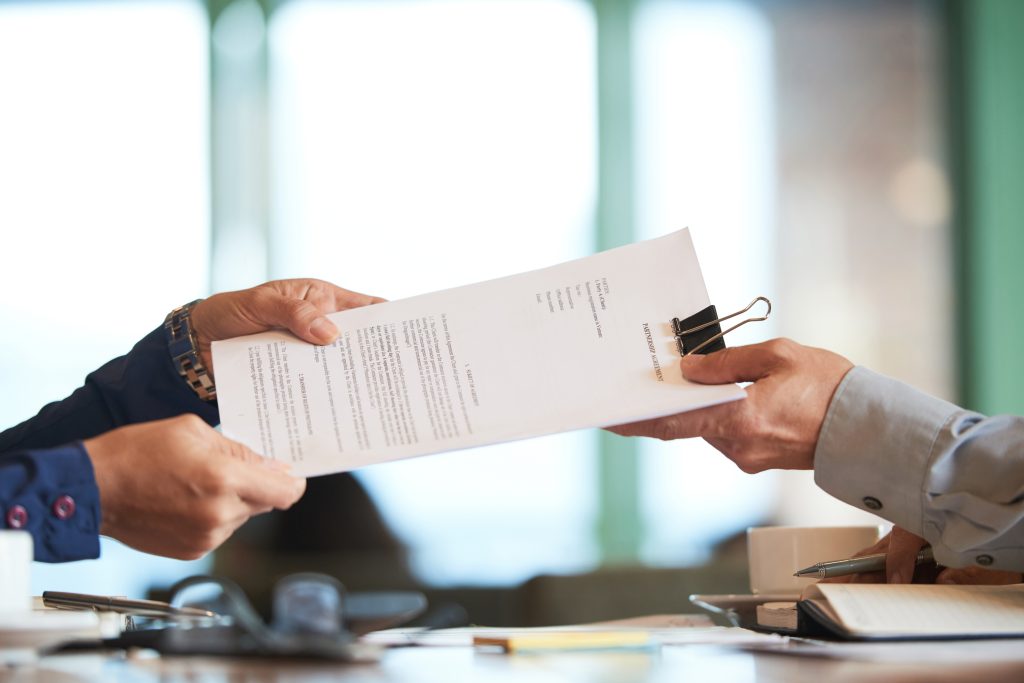
Table 8 – Challenges and Proposed Solutions for Exporting Iranian Luxury Leather Goods
| Challenge | Explanation | Proposed Solution |
|---|---|---|
| Competition with global brands | Market dominated by centuries-old, high-prestige brands | Differentiation through storytelling, unique design, and limited editions |
| Certifications & regulations | Strict EU/US compliance requirements | Work with export consultants; annual compliance planning |
| Currency fluctuations | Instability in final product pricing | Fixed-currency contracts; market diversification |
| Logistics limitations | Sanctions and reliance on indirect shipping routes | Establish intermediary warehouses; collaborate with experienced logistics |
| Low global brand awareness | Limited customer knowledge about Iranian brands | International marketing; trade show participation; influencer collaborations |
9. Case Study
9.1 Brand Introduction and Export Path
The hypothetical brand “Nava Leather”, headquartered in Tehran with a production workshop in Tabriz, was founded in 2018 with the goal of entering the European luxury market. Nava Leather specialized in handcrafted leather bags inspired by Persian motifs, blending traditional artistry with modern design.
Main stages in Nava Leather’s export journey:
- Market research (2018): Analyzed European markets and identified countries with strong demand (Italy, France, Germany, Netherlands).
- Product preparation (2019): Improved tanning through vegetable methods, standardized quality, and adopted luxury packaging.
- MIPEL Fair participation (2019): Presented products to major buyers and distributors in Europe.
- Partnership with Italian distributor (2020): Began exports to three European countries.
- Expansion online (2021): Launched a multilingual e-commerce website with international payments and worldwide shipping.
- Entry into Middle East (2022): Used a Dubai warehouse hub to streamline logistics and reduce delivery times.
9.2 Key Success Strategies
- Product differentiation: Use of vegetable-tanned leather and Persian architecture-inspired motifs.
- Cultural branding: Storytelling for each product via booklets detailing design inspiration and craftsmanship.
- Smart networking: Partnered with reputable distributors instead of pursuing direct retail in early stages.
- Logistics management: Leveraged hubs in Istanbul and Dubai to optimize costs and shipping times.
9.3 Challenges and How They Were Managed
| Challenge | Corrective Action | Outcome |
|---|---|---|
| Competition with European luxury brands | Focus on limited editions and unique design | Increased buyer attention to brand authenticity |
| Currency volatility | Signed fixed-currency contracts | Stable pricing and protected margins |
| Logistics limitations from Iran | Used intermediary warehouses in third countries | Faster delivery and reduced costs |
| Low brand recognition | Produced multilingual content, attended luxury events | Boosted awareness in target markets |
9.4 Results and Achievements
- Annual export of over 4,000 luxury bags to Europe and the Middle East.
- 45% increase in international online sales within two years.
- Placement in 12 luxury retailers across Paris, Berlin, and Milan.
- Achieved LWG Silver certification and ISO 9001 in 2021.
9.5 Lessons Learned for Iranian Brands
- Market research must precede production investment.
- Focusing on USP (Unique Selling Proposition) enhances success in saturated markets.
- Networking with trusted distributors accelerates entry into competitive markets.
- Smart logistics and intermediary routes can overcome sanctions and transport barriers.
10. The Role of MMF Market in Facilitating Luxury Leather Exports from Iran
The MMF Market platform, as a specialized brokerage and export hub, serves as a bridge between Iranian producers and reputable international buyers. It not only introduces Iranian brands to the global market but also manages the entire export process—from marketing initiation to final product delivery—with an integrated structure.
10.1 Brokerage Services and International Networking
- Direct connection with bulk buyers in Europe, the U.S., Asia, and the Middle East.
- Access to an exclusive database of luxury retailers, reputable boutiques, and specialized leather importers.
- Organization of B2B meetings and negotiations with potential buyers at trade fairs and events.
- Impact example: Brands introduced through MMF Market have secured export contracts worth over $100,000 within the first 6 months of cooperation.
10.2 Support in Obtaining Certifications and International Standards
- Consulting and assistance in acquiring certifications such as LWG, ISO 9001, ISO 14001, CE, REACH.
- Coordination with international labs and institutes for quality and safety testing.
- Continuous monitoring of target market regulations and updating brand documentation accordingly.
- Advantage: Reduced time and cost in certification processes and inspections.
10.3 International Marketing and Branding
- Designing multilingual digital campaigns tailored to the cultural context of target markets.
- Representation of brands in major leather exhibitions such as MIPEL, Lineapelle, and APLF.
- Production of professional content including photography, promotional videos, and brand storytelling to appeal to luxury consumers.
- Advantage: Establishes Iranian brands in the minds of foreign customers as luxury products with cultural authenticity.
10.4 Logistics and International Transportation Management
- Partnerships with top logistics providers like DHL, FedEx, Aramex, and international shipping lines.
- Optimized logistics routes via intermediary hubs (Turkey, UAE) to minimize costs and delivery times.
- Comprehensive cargo insurance and real-time shipment tracking systems.
- Advantage: Ensures timely and secure delivery of luxury leather goods, even under sanctions or trade restrictions.
10.5 Training and Capacity-Building for Brands
- Conducting webinars and workshops on export, international trade regulations, branding, and marketing.
- Providing market reports and consumer trend analyses for strategic decision-making.
- Advising on product development aligned with the preferences of target markets.
Table 10 – MMF Market Services and Added Value for Exporters
| Service Area | Description | Added Value |
|---|---|---|
| Market Access | Direct introduction to reputable buyers | Faster market entry and contract acquisition |
| Certifications & Standards | Consulting and assistance in obtaining certifications | Access to highly regulated markets |
| Marketing & Branding | Multilingual campaigns, trade fair representation | Increased brand awareness and credibility |
| Logistics & Contracts | Optimized transport, insurance, tracking | Lower export costs and risks |
| Training & Consulting | Workshops and market analysis reports | Enhanced competitive strength of brands |
10.6 Roadmap for Brand Collaboration with MMF Market
- Initial Assessment: Evaluation of product, production capacity, and market potential.
- Export Preparation: Obtaining certifications, upgrading packaging, and improving quality.
- Buyer Connection: Introducing the brand to potential buyers and initiating negotiations.
- Contracts & Logistics: Drafting international agreements and managing shipments.
- After-Sales Support: Monitoring customer satisfaction, contract renewals, and market expansion.
11. Conclusion and Final Recommendations
The export of Iranian luxury leather goods, if supported by a precise strategy, adherence to global standards, and smart branding, can become one of the most sustainable and profitable sectors of the country’s non-oil exports.
This study highlights three major advantages of Iran:
- Premium quality raw materials due to unique climatic and livestock conditions.
- High craftsmanship in handmade stitching and artistic design.
- Competitive production costs compared to global rivals.
However, challenges such as fierce competition with century-old brands, complexities of certification processes, logistical restrictions, and limited brand recognition in global markets demand careful planning and precise execution.
11.1 Suggested Roadmap for Successful Luxury Leather Exports from Iran
| Stage | Key Action | Goal | Tools & Solutions |
|---|---|---|---|
| Market Research | Identify high-potential countries and markets | Selecting the right target market | Market reports, statistical data, export consultants |
| Product Preparation | Quality improvement, luxury packaging, compliance | Increase market acceptance | Enhanced tanning, custom design, quality testing |
| Certification | Obtain ISO, LWG, CE, REACH | Smooth and legal entry into strict markets | Partnerships with accredited institutions and brokers |
| Branding & Marketing | Trade fairs, digital advertising, storytelling | Strong identity & demand creation | Multilingual campaigns, influencer collaborations |
| Distribution Channels | Mix of luxury retail, online sales, B2B platforms | Maximized customer reach | Omni-channel strategies |
| Logistics Management | Optimized shipping, insurance, tracking | Timely and secure delivery | Collaboration with reputable logistics companies |
| Export Support | Leveraging MMF Market services | Reduce risks and costs | Verified buyers’ network, expert consulting, logistics facilitation |
11.2 Key Recommendations for Iranian Brands
- Focus on USP (Unique Selling Proposition): Cultural storytelling, distinctive design, and premium quality must be consistently highlighted across all brand communications.
- Invest in digital marketing: Active presence on global platforms with professional, multilingual content.
- Market diversification: Avoid dependence on a single region to reduce economic and political risks.
- Smart logistics management: Leverage intermediary hubs and multi-modal routes to minimize costs and delivery times.
- Partnership with specialized platforms like MMF Market: To accelerate exports and facilitate entry into new markets.
11.3 Future Outlook
With rising global demand for handmade, sustainable, and culturally authentic products, Iranian luxury leather goods have the potential to achieve a prominent position in international markets within the next decade.
Strategic investment in branding, product quality, and export infrastructure will be the key to achieving this long-term vision.
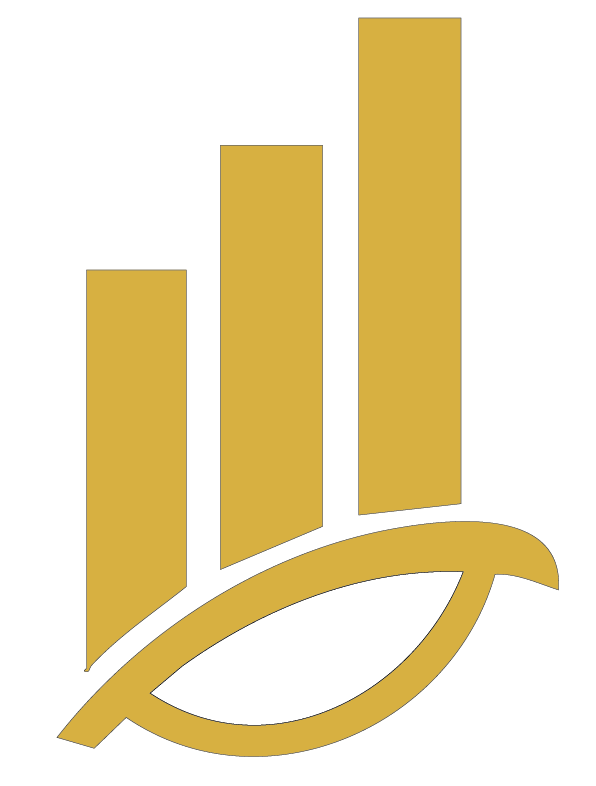
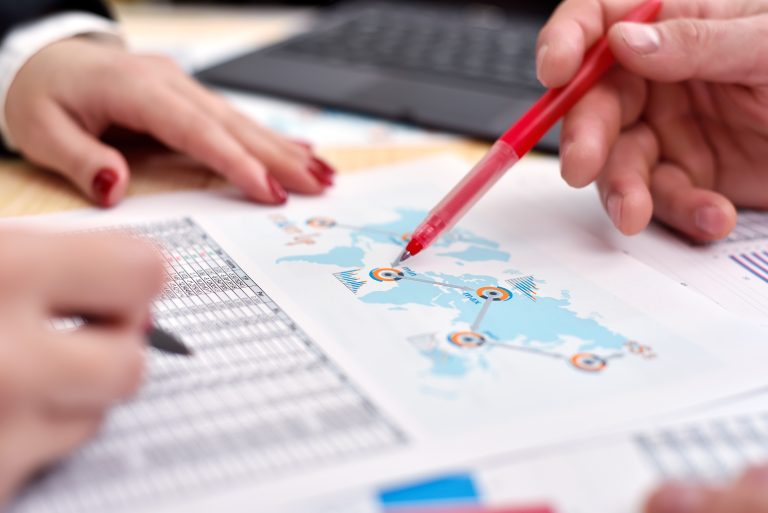
No comments yet.